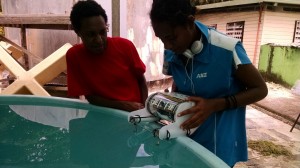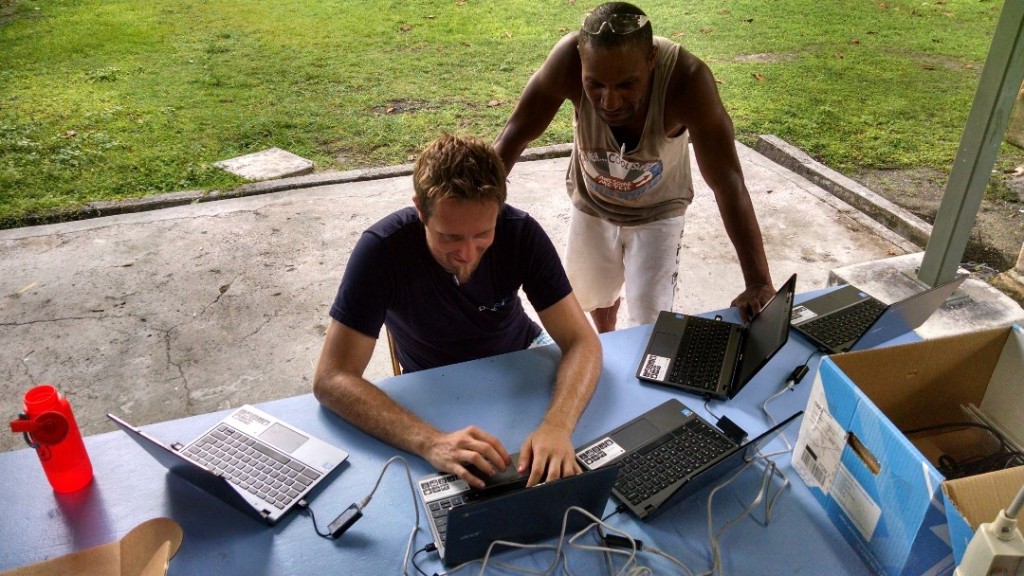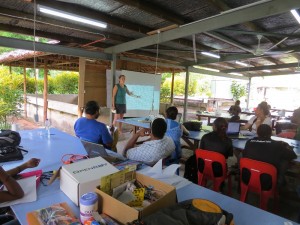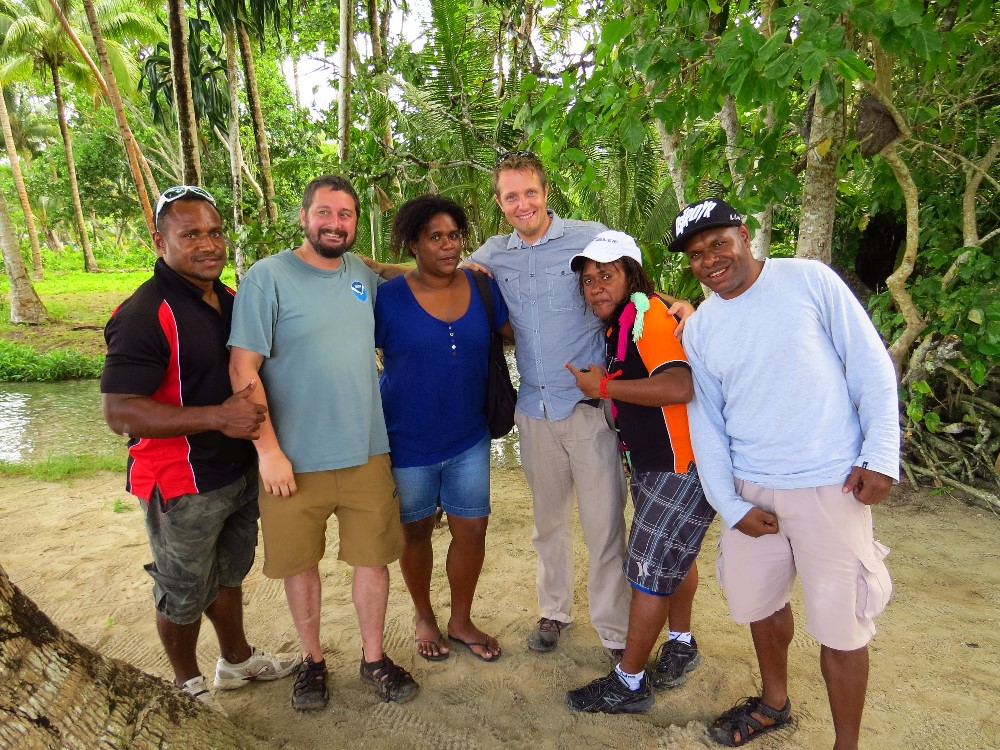Note: we’re home after an exceptional 3 weeks of work in Papua New Guinea. Sadly, the course was so intense that we weren’t able to produce updates during the program. Instead, please accept these time-shifted updates from #ROV2PNG.

After a long week of intensive robot building, six brand new OpenROVs went into the water on Friday. Our student’s hard work paid off as their robots dove into the freshwater test tank. There are few things more rewarding than watching students, who’ve sweated over a difficult build while learning challenging new skills for 12 hours or more every day, launch their completed robots drive them around the test tank for the first time.
Of course, failure is part of our pedagogy, and two robots will require another day of troubleshooting before they can be released into the sea.


Friday also marked the first milestone for the student ecology projects. Each student took to the stage to present their research proposal to the class. From 23 excellent projects, the instructors narrowed it down to six proposals that will be developed into full research projects and implemented over the next week. After carefully deliberations, we picked the six that best fit into the limitations of a week long course and take advantage of the OpenROVs’ capabilities. This week, we’ll explore the diversity and distribution of commercial sea cucumbers in Kavieng lagoon, the effect of electromagnetic fields on sharks offshore, habitat structure of seagrass beds around Nago Island, impacts of marine debris around Kavieng town, abundance of hard coral coverage on local reefs, and temporal variability of sea stars in nearshore regions.

We’re looking forward to another exciting week of marine ecology via remote observation on Nago Island!
I would love to get details on how to build these ROV’s! Would you be able to share?